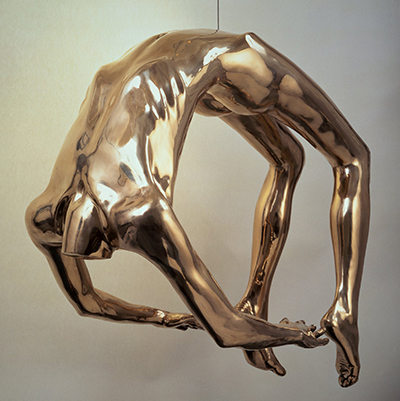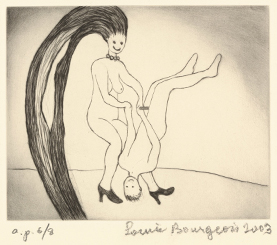





Figures

Famille
1947-1949

Sainte Sébastienne
1990-1998
The motif of the human figure served as an embodiment of changing moods and desires for Louise Bourgeois throughout her career. Early on, she painted, drew, and printed intimate scenes of family life—her husband reading, her children in the tub, herself setting the table. Her first sculptures, in the late 1940s, were abstracted wood totems that represented people she left behind in France. She called them “personages,” and similar figures appear in her prints of that time.
Later, Bourgeois turned to sculptures of organically shaped body parts that morphed between genders, and from human to landscape forms. She released her aggression in a series of female figures fashioned as weapons, titled Femme Couteau (Knife Woman). By the 1990s, her previously abstracted figural shapes took on a heightened realism. The monumental drypoint Sainte Sébastienne is an explicit representation of the pain she perceived from personal attacks. She said of her artistic strategy, “If I want to express something of immediate, all-consuming importance…I will make a piece that is inspired by a very strong desire to stand in,” for it.
Bourgeois’s repertoire of figures expanded up until her last years, and included recurring images of couples, in all mediums, that reflect a provocative sexuality for which she was well-known. She focused, as well, on the act of giving birth. In prints and drawings, her female figures often display flowing locks that denote both attraction and entrapment and serve as a sign of self-portraiture, since Bourgeois kept her hair very long for most of her life.

Famille
1947-1949

Sainte Sébastienne
1990-1998
“A ferocious desire for independence is in all the figures…a determination to survive at whatever fragile level you can achieve.”